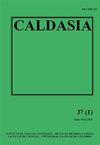哥伦比亚大草原上chiguiro (Hydrochoerus hydrochaeris)种群参数的多年分析,以利用它们
IF 0.3
4区 生物学
Q4 PLANT SCIENCES
引用次数: 0
摘要
野生动物的可持续利用需要有关自由放养种群的人口统计参数的信息。尽管在水豚分布的各个地方都有对水豚种群的开采,但在哥伦比亚,水豚的合法使用已经暂停了20年。哥伦比亚和委内瑞拉被洪水淹没的稀树草原是水豚数量最多的家园,由于人类活动的变化,它们面临着很高的风险。在这里,我们估计了水豚种群的密度、大小、年龄结构和群体规模。我们提供了2004年至2017年间7次抽样的信息。我们在Casanare(哥伦比亚)的Paz de Ariporo建立了一个3600公顷、间隔700米的横断面网格。进行了3种类型的比较:1)年际间,连续年样品的气候周期相等;2)季节性,连续年的不同气候周期;3)按十年,间隔一个十年的气候周期相等。对所有样本,我们计算了有限种群增长率(λ)、最大产量指数(Pmax)和与哥伦比亚允许采收期一致的样本的持续收获指数(h)。2005年种群规模最大(N = 12 802, D = 3.75ind / ha),而2017年种群规模呈下降趋势(N = 6 928, D = 2.03ind / ha)。在季节性干雨比较中,λ显示出近30%的下降,而每十年存在正波动和负波动。对于2005年和2015年的采样,(h)表明可持续采收是可行的,但有必要对其种群和栖息地进行监测。本文章由计算机程序翻译,如有差异,请以英文原文为准。
Análisis multianual de parámetros poblacionales del chigüiro ( Hydrochoerus hydrochaeris ) en las sabanas inundables colombianas, con miras a su aprovechamiento
Sustainable use of wildlife requires information about the demographic parameters of free-ranging populations. Although exploitation of capybara populations occurs throughout its distribution, in Colombia its legal use has been suspended for two decades. The flooded savannas of Colombia and Venezuela that are home to the largest population of capybara are under high risk due to anthropic transformations. Here, we estimated density, size, age structure, and group size of a population of capybara. We present information from seven samplings between years 2004 and 2017. We established a 3600 ha grid with 700 m spaced transects in Paz de Ariporo, Casanare (Colombia). Three types of comparisons were made: 1) Interannual, equal climatic periods in samples of contiguous years, 2) Seasonal, different climatic periods of contiguous years, and 3) by decade, equal climatic periods in intervals of one decade. For all sampling, we calculated the finite population growth rate (λ), the maximum production index (Pmax), and for the samplings that coincided with the harvesting period allowed in Colombia the sustained harvest index (h). In 2005, the population presented the largest size (N = 12 802, D = 3.75ind / ha), while in 2017 it tended to decrease (N = 6 928, D = 2.03ind / ha). In the seasonal rain-dry comparisons, λ shows a decrease near to 30 %, while, per decade, there are positive and negative fluctuations. For the samplings in 2005 and 2015, (h), indicates that sustainable harvesting is viable, however, it's necessary the monitoring of the their populations and habitat.
求助全文
通过发布文献求助,成功后即可免费获取论文全文。
去求助
来源期刊

Caldasia
PLANT SCIENCES-ZOOLOGY
CiteScore
1.30
自引率
16.70%
发文量
28
审稿时长
24 weeks
期刊介绍:
La revista está orientada a publicar contribuciones originales escritas en español o inglés relacionadas con la documentación, comprensión y conservación de la diversidad biológica. La revista contempla el tema de la biodiversidad en un sentido amplio y por tanto incluye trabajos en áreas como botánica, zoología, ecología, biodiversidad, biogeografía, taxonomía, sistemática, conservación, y disciplinas afines.
 求助内容:
求助内容: 应助结果提醒方式:
应助结果提醒方式:


